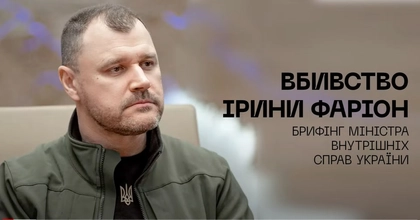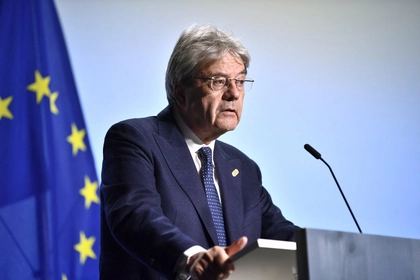Russia’s full-scale invasion not only took Ukraine by surprise but caught the rest of the world napping. In the almost 19 months since Putin’s invasion began the response by Kyiv’s partners to provide military and humanitarian aid has been generally nothing short of remarkable, but there have been hiccups along the way.
Ukraine’s former Defense Minister, Oleksiy Reznikov, said at the beginning of September that Kyiv had received around $100 billion in military aid from Western backers.
JOIN US ON TELEGRAM
Follow our coverage of the war on the @Kyivpost_official.
Much of that assistance, particularly from the US, has been in the form of modern air defense, anti-armor and artillery weapons and ammunition. In reality, the extent of support needed and the limited time available to supply has largely relied on donors providing equipment from their existing stockpiles, a lot of which, particularly among vehicles and aircraft, was old and needed to be extensively overhauled before it could be used.
In any event it was mostly better than or at least as good as the systems Ukraine already had and crucially in the quantities needed to resist the Russian “hordes.” Most of the contributing nations took this into account and ensured that the necessary work was done to ensure the equipment sent to Kyiv was serviceable – but sometimes this went wrong.
A New York Times article in June suggested that much as 30 percent of the arsenal bequeathed to Ukraine needed to be repaired which some defense experts suggested was unacceptable “for a military that needs every weapon it can get for its developing counteroffensive.”

Farion’s Killer Prepared Disguises, Had Another Victim in His Sights, Interior Minister Says
Let us look at some specific instances and try to get to the bottom of what went wrong.
Air defense systems
At the start of the war Ukraine had to rely solely on its stocks of Soviet era anti-aircraft and anti-missile systems to protect itself. This included the Igla and Strela Man-portable air defense systems (MANPADS), medium and long-range surface to air missiles (SAM) such as the Stilet, Buk, Gyurza, S-200 and S-300, and the aging ZSU-23-4 self-propelled, four-barreled 23mm gun.
As Russia’s missile and drone attacks against Ukraine’s civilians and infrastructure began in earnest one of Kyiv’s priorities asked for were air-defense weapons. In March 2022 the German DPA news agency reported that, as an interim measure Germany had offered to supply 2,700 Strela MANPADS.
Patriot Missile system launcher. Photo: AFP
However, according to Der Spiegel when the missiles, which had previously been held by East Germany, were inspected, the weapons were found in wooden boxes so moldy that protective clothing was needed to simply open the boxes and they were only fit for destruction. Germany later provided 500, serviceable, US Stinger MANPADS
In a March 2023 interview with Associated Press, President Zelensky said that an unnamed European ally had provided Ukraine with an air defense system that proved faulty, didn’t work and Kyiv “had to change it again and again.”
Eventually, Ukraine was to receive the modern anti-missile defenses it needed including MANPADS and extremely capable modern medium to long range systems it needed including the US Patriot, Norwegian NASAMS, German IRIS-T and French SAMP/T.
Aircraft
Ukraine has been requesting modern fighter aircraft, specifically the US F-16 from its Western partners to support its operations for some time. There now appears to have been a breakthrough with promises of provision of the aircraft. As an interim measure Poland and Slovakia agreed to provide a total of 33 MIG-29 (NATO designation: Fulcrum) fighters – the logic being that as Ukraine already flew them, its pilots would not require any additional training.
However, when the 13 aircraft provided by Slovakia were inspected, they were found to be unsuitable for combat. As the Slovakian Defense Minister, Jaroslav Nad, said at the time “The Ukrainians came to Slovakia a week before their departure, brought spare parts, and inspected the planes, they were able to fly, but… [weren’t] capable of combat.”
Ukrainian (ex-Poland) MIG 29. Photo: screenshot
It seemed that Russian contractors, who Slovakia had used to service their aircraft, had sabotaged them. Fortunately, Ukraine had the experience and technical knowledge to eventually get them up to operational standards.
Italian Self-propelled howitzers
In late 2022 Italy offered a total of 33 OTO Melara M109L 155mm self-propelled guns. These were part of a total of 280 vehicles, which were a 1986 upgraded version of the US-made artillery pieces, which were originally purchased in the 1970s. The upgrade was fitted with improved weapon control systems and an Italian designed and manufactured gun.
OTO Melara M109L 155mm self-propelled gun/ Photo: Oryx X (formerly Twitter)
The vehicles had been decommissioned several years earlier and Italy says it warned Ukraine that they would need to be overhauled. Ukraine accepted this but had an urgent need for artillery at the time and arranged for a US company, the Ultra Defense Corporation, to refurbish them.
An article in the Financial Times in April suggested that when the weapons arrived in Ukraine in January 13 of them were found to be “not suitable for combat missions.” As a result, they needed repair by Ukraine and the issue of the suitability of the repairs made is now the subject of a Pentagon investigation.
US Humvees and M777 155mm howitzers
The US army pre-positioned stock (APS) program stores equipment in seven strategic locations around the world which are intended to reduce deployment response times. One such location, APS-5, is in Kuwait. The stored equipment is maintained by civilian contractors, ostensibly under military supervision.
The mechanism for releasing US military equipment and weaponry from existing stocks is the “Presidential Drawdown Authority (PDA) for Military Assistance for Ukraine,” which was used over 40 times to support Ukraine following Russia’s full-scale invasion.
One such PDA authorized the release of 6 M777 155mm light howitzers and 29 M1167 High Mobility Multi-Purpose Wheeled Vehicles (HMMWV), better known as Humvees, from APS-5 stocks.
Humvees in PDA 5 storage, 2015. Photo: 401st Army Field Support Battalion, Battalion page
During the pre-inspection for delivery to Ukraine all the howitzers and 26 of the Humvees were found to be unserviceable.
For the howitzers it was found, that despite documentation to the contrary, maintenance schedule and procedures had not been rigorously enforced. The artillery had not been assembled correctly and hydraulic fluids not replaced. Both of which could cause a catastrophic failure in using probably killing the operators.
M777 155mm howitzer in action. Photo: Australian army public relations
For the Humvees there were numerous faults which would have been picked up during maintenance, the worst being that nearly all the tires were suffering from “dry rot” and needed to be replaced.
The outcome, which is the subject of a US Department of Defense inquiry, resulted in a delay of nearly three months in delivery to Ukraine and an additional cost of several hundred thousand dollars.
Tanks
Germany, the Netherlands and Denmark have agreed to provide around 100 refurbished Leopard 1 main battle tanks (MBT), first developed in the 1960s to Ukraine. The MBTs offered by Germany had been updated in the 1990s and were decommissioned a decade ago.
Leopard 1. Photo: X (formerly twitter)
The Daily Telegraph reported on Sept. 19 that two consignments, a total of 20 MBTs, received from Germany were unserviceable and required repairs that Kyiv was unable to carry out because it lacked engineers trained to carry out the work.
Despite tank crews having received intense training in the battlefield use of the Leopards, there had been little time to train Ukrainian technicians as the weapons were needed urgently to support the ongoing counteroffensive. Germany will now take remedial action but it has introduced a delay in fielding the tanks.
Ukraine’s response to these issues
Volodymyr Havrylov, a deputy defense minister working on arms procurement is quoted in the June New York Times article as saying that Ukraine was scrambling to find arms wherever it could and that while there were issues of quality with some of the weapons received “we have to keep in mind that they were a gift.”
The article comments that Ukrainian officials have, so far, largely resisted the urge to complain about defective equipment to avoid embarrassing its backers.
It warns, however, that Kyiv may become tired of hearing certain donor countries extolling their own virtues in the quantities of equipment already provided to Ukraine when some of it arrives in poor or unusable condition only fit to provide spare parts rather than being directly suitable for combat.
Western military experts have repeatedly warned that it is not enough just to send weapon systems to Ukraine but there must be support in establishing effective logistics, spares and technical training if Kyiv is to keep its equipment maintained, repaired and running.
You can also highlight the text and press Ctrl + Enter












